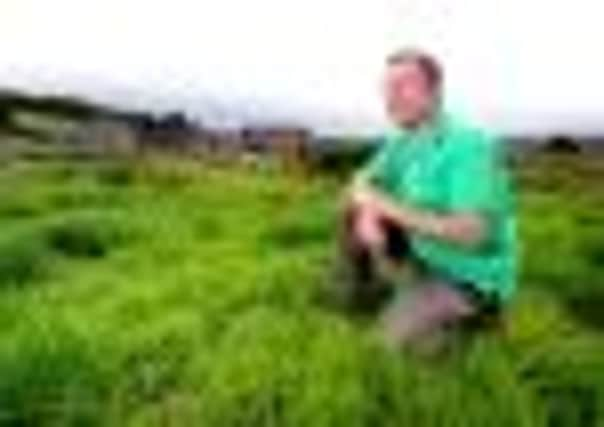Run-down hillside farm being brought back to life


But in its collapsed barns, broken roadways and weed-infested pastures, a Yorkshire council and its partners see the future.
They plan not only to breathe life back into it but to make it a new sort of farm, providing work and education as well as food for neighbours.
Advertisement
Hide AdAdvertisement
Hide AdStirley Community Farm is halfway up the slopes between Castle Hill and 18,000 people in the Newsome Ward of Huddersfield, on the road out towards Holmfirth.


A small dairy farmer gave up the struggle there 10 years ago. Kirklees Council, which owns the site, could probably have found somebody to pretty up the farmhouse and keep ponies in the fields. But local green activists held out for something to do with “community food” – the rallying call of what might be called the new Dig For Victory movement.
Last week, in a portable cabin on the site, the Yorkshire Wildlife Trust, now tenants of the farm on a 25-year lease, signed for £300,000 of funding from The Veolia Environmental Trust, which channels money from a levy on landfill, paid by waste management companies. It held a national competition for “creative, adventurous, exciting and ambitious ideas”. And the farm project was a winner.
The Wildlife Trust reckons it will cost £600,000. But it already had the other half in place, from the Lottery Fund.
Advertisement
Hide AdAdvertisement
Hide AdVolunteers have been at work since the beginning of this year, clearing weeds and rubble, patching up barns and setting up vegetable beds which will be the classrooms for lessons in growing.


When the Yorkshire Post called, Susan Brown, a PhD in Oceanography, and Charlotte Holgate, a graduate in Biology and French, were weather-boarding a barn. Both are working free for a year because they want to get into the conservation business. A surprising amount of work will get done on that basis, it seems.
Farm manager Ian Smart is one of only two full-timers. In October, he expects to start buying Shorthorn heifers in calf, on the way to building a suckler herd of about 50 and rearing beef entirely on grass from the farm. The idea is that grass-fed traditional beef night find a niche market, first with the neighbours and then with restaurants. With farming subsidies and stewardship payments on top of the meat sales, income should eventually be around £120,000, to set against running costs of £150,000.
Stirley Farm has about 240 acres, which is more than enough to supply winter hay and silage. That will be harvested by machine, as in mainstream farming. “You would need 1,000 people to cut the hay on this site like you would have done 300 years ago,” said Rob Stoneman, chief executive of the Yorkshire Wildlife Trust.
Advertisement
Hide AdAdvertisement
Hide AdHowever, it is expected that volunteers will help with fencing, walling, mucking out and even calving.
The beef operation will keep Stirley Farm grounded in commercial agriculture. Orchards and fruit tunnels, producing juice with a local stamp on it, are another possibility. But there will also be an unusual level of interaction with the neighbours. Walkers will be welcome, dogs and all – so they can learn to be farm-friendly. An old barn is to become a hall for talks and events. An education officer, Kim Warren, is already in place as the farm’s other full-timer.
One possibility, in the long run, is letting some land for allotments. Although this is where Huddersfield peters out into Pennine country, it is a common complaint on the local estates, both “council” and private, that gardens are small and growing space is hard to come by.
Social and education and health services are expected to want to do deals for placements at the farm. Paid work and formal training will be added to the work experience opportunities as funds permit. The Trust did have some funding from the Future Jobs Fund but that has been axed.
But everybody there is buzzing with ideas for filling the gap.